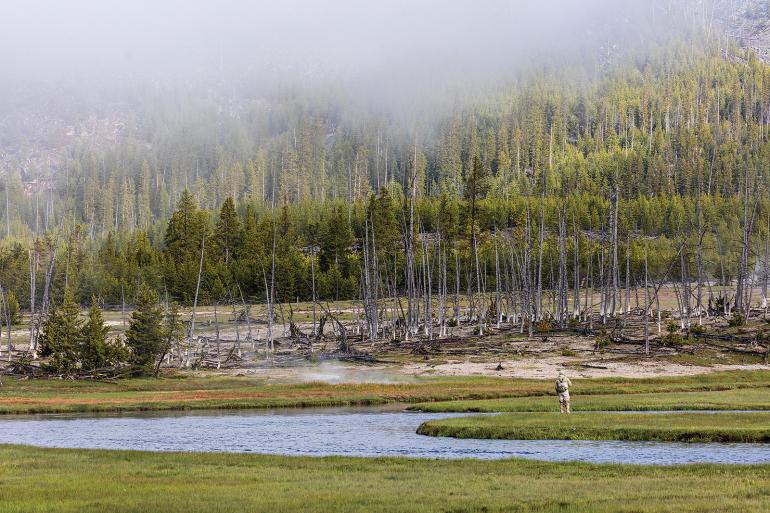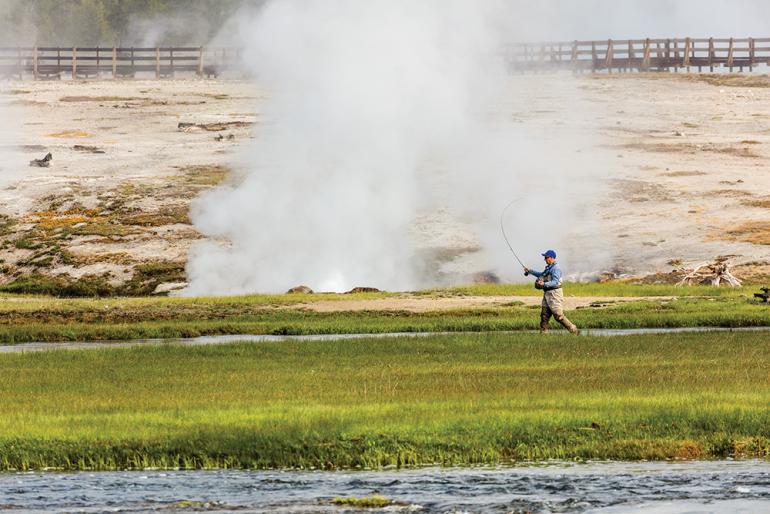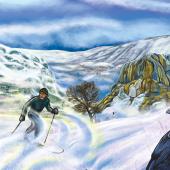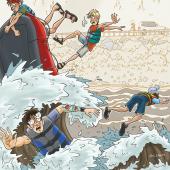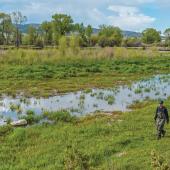Casting in the Caldera
A unique fishing experience.
Fishing in Yellowstone is so much more than just fishing. Yes, the world’s first national park is full of trout-stuffed rivers and lakes, many more than I can possibly mention. But the spectacular scenery and wildlife make a visit to “America’s Serengeti” an out-of-this-world fishing experience. After all, where else do your fishing photos have a bison or an erupting geyser in the background?
When I think about distilling fly fishing in the Park, certain “key experiences” stand out. These are the “right place, right time” fishing days that you’ll remember for the rest of your life. But this is just a sampler, and others might have a different list entirely. Visit or call a fly shop near the Park for up-to-date intel on these and the myriad of other options.
Early June: Soft Hackles on the Firehole
When the season begins on Memorial Day weekend, many streams are still high and muddy, filled with melting snow. The upper Firehole River is often an exception, and its water will usually be clear enough to fish. The Firehole’s brown and rainbow trout seem particularly interested in soft hackles swung across its relatively placid currents, perhaps imitating caddis pupa swimming to the surface. Cast down and across, mend to help the fly sink, swing through the riffle, and hold on! You will want to use stouter tippet than you might otherwise, as takes can be aggressive. Think of it as swinging very small streamers—it can be deadly. The Firehole also hosts emergences of multiple caddis and mayfly species, but it’s the early-season swinging that is an annual pilgrimage for many, and fishing amongst the river’s many geothermal features is just plain cool. As the season progresses into June, the lower canyon stretch can have good dry-fly fishing with big stonefly hatches. The river tends to warm up to unfishable temperatures by mid-summer, but becomes a great option again come fall.
Mid-June: Salmonflies in the Black Canyon
If fishing huge dries to native Yellowstone cutthroat sounds fun, and you’re in decent shape physically, then the Yellowstone River’s Black Canyon might just be for you. The Black Canyon can be accessed via a couple of trailheads along the main loop road between Mammoth and Tower Junction. The hikes down to the river are short and steep, but time it right and when you reach the river you’ll see the giant salmonflies flying clumsily about. You might also see somewhat smaller, but still hefty golden stones, especially later in June. Much of the fishing is in pockets and eddies along the rocky shores, and you might need to do a bit of rock scrambling to get in position. You’ll want to slap your big dry fly in each hole as you work upstream or downstream. No delicacy necessary here. If no fish come up from the depths to inhale your fly within a few casts, move on to the next spot and repeat. Attach a big stonefly nymph as a dropper a couple of feet below the dry to really clean up.
Mid-June to Mid-September: Dries in the Lamar
The northeast portion of the Park is cutthroat heaven. The Lamar and its tributaries host arguably the country’s best fishing for big, native cutties. Cutthroat love dry flies, especially attractors and terrestrials. Drift a Royal Wulff or a Morrish Hopper through the head of a pool and along the banks and you’re more than likely to experience the notoriously slow rise of a chunky and colorful Yellowstone cutthroat (try not to set the hook too soon!). In the afternoon, if you’re lucky, you’ll see big green-drake mayflies emerging. The hatch might only last an hour or two, but the dry-fly fishing can be epic.
Nearby Soda Butte Creek fishes like a smaller Lamar and contains some surprisingly large fish. Want to test your abilities (and patience)? Give Slough Creek a try. The water is generally slow and clear and the cutthroat large but picky. The true Slough Creek experience is watching a nice-sized cruising cutthroat inspect and refuse every pattern you try until you ultimately entice it to eat. If you’re willing to hike a bit, you can head to one of Slough Creek’s upper meadows, where the fish tend to be smaller but less pressured.
September and October: Streamers on the Madison
The relatively short stretch of the Madison River inside the Park, from the confluence of the Firehole and Gibbon rivers, holds plenty of nice resident rainbow and brown trout all season. But your best bet at catching a trophy is during the fall, when big browns preparing to spawn swim upstream from Hebgen Lake, just outside the Park boundary. Targeting them with big streamers is the main gig. You might swing a huge fly all day for just one fish. But what a fish! The spawning run is no secret, and the best-known holes can get crowded. But follow West Entrance Road along the Madison and you should be able to find a spot. With luck, you could catch the fish of a lifetime.
Regs
The Park fishing season runs from Memorial Day weekend through October 31. A Park fishing license is required and can be purchased online. Other regulations apply, so be sure to pick up and read a current copy of the regulations.
Dan Gigone owns Sweetwater Fly Shop in Livingston.


